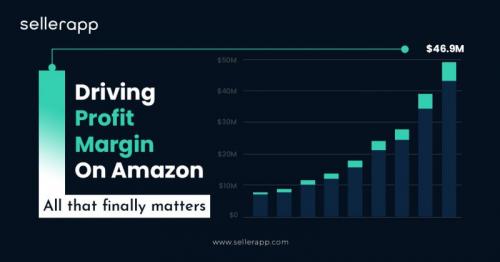What is a Good Profit Margin For Amazon Sellers?

Creating a good profit margin for amazon sellers requires some basic knowledge. You need to determine what you will be charging for your products, calculate the fees you will be paying to sell on amazon, and decide how much risk you want to take.
Creating a reasonable profit margin on Amazon
Creating a reasonable profit margin for Amazon sellers is a key element in maintaining a successful business. This means lowering the prices of unused products and bundling them with other items. It's also important to price your items correctly, ideally between the MAP and MSRP price.
It's also important to make sure that your branded products are high quality and reputable. Customers want to buy a brand that's well-known and trusted. This means that you must market your product effectively and create content that builds your brand.
In order to make a profit on Amazon, you must sell your products at a price that's higher than the average price. This ensures that you get a higher ROI. This means that you'll double your investment. This is a great rule of thumb for new sellers.
When calculating your profit margin on Amazon, you'll need to estimate your COGS, as well as your seller fees. Then, you'll need to figure out your break even point, which is the sales you need to start making a profit. This is a key business metric that can help you update your plan and target sales goals.
You'll also need to calculate your long-term costs, such as the cost of storage. It's important to think about the costs of your products in the long-term, especially if you're planning to expand your Amazon business.
Calculating the fees you'll pay to sell on Amazon
Whether you are just starting out on Amazon or have been selling for a while, calculating the fees you'll pay to sell on Amazon is one of the first things you should do. If you miss a fee, it can add up to lost profit. You may be surprised to find out just how many different types of fees you'll be charged by Amazon.
Amazon charges fees for every service you use. This includes product charges, product rebates, and FBA program fees. The fees can vary based on size and peak/off-peak hours. Some services even carry additional fees, such as gift wrapping.
Amazon also charges referral fees. These are calculated as a percentage of the sale price. The percentage varies by category, but the average range is 8% - 15%. Some categories offer low referral fees, such as Kitchen & Dining, Toys & Games, and Office Products.
Amazon also charges a shipping fee. This is used to cover the costs of customer services and shipping. The shipping rate for your items will change each year. In addition, there are other costs you'll have to take into account, including platform and production costs.
These fees are a small part of the overall cost of selling on Amazon. But, if you are not sure how much you are paying, you can use an Amazon calculator to calculate your exact fees.
Limiting your risk in selling on Amazon
Whether you're an Amazon seller or just thinking about it, you have a lot of decisions to make. There are several risks associated with selling on Amazon. However, there are some steps you can take to mitigate those risks and increase your bottom line.
The best way to minimize your risk is to source your inventory from the same suppliers as your competition. In the Amazon world, there are two main methods of doing this: FBA or FBM. The FBA method allows you to have your inventory shipped directly from the warehouse, while the FBM method gives you access to your buyers' postal addresses. You can also have your products shipped using your own logistics if you prefer.
While you're at it, you may also want to consider implementing some of the best Amazon selling practices. For example, you should upload your tracking numbers to the site as soon as possible. You'll want to keep a close eye on your inventory and set daily disbursements. If you don't, your Amazon account may be suspended without notice.
Another way to limit your risk is to use Whitebox to sell directly to Amazon. While there are a few disadvantages to this method of selling, it's a great way to reduce your cost and hassles.
Post Your Ad Here
Comments